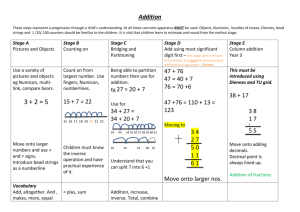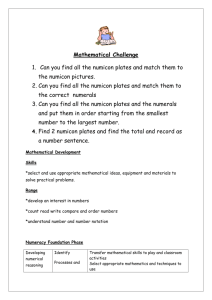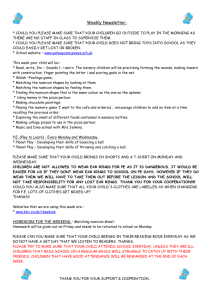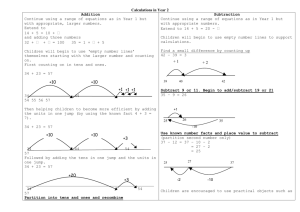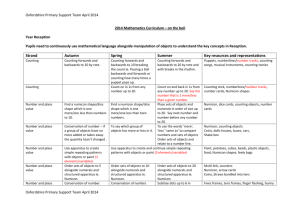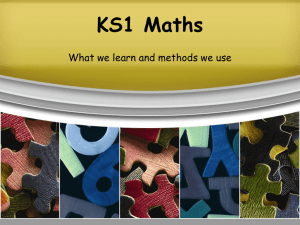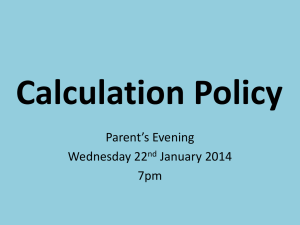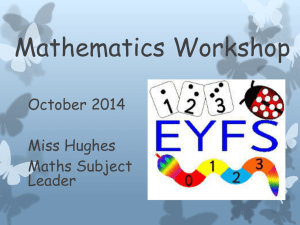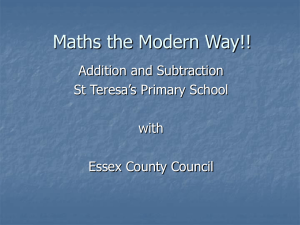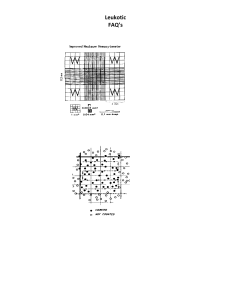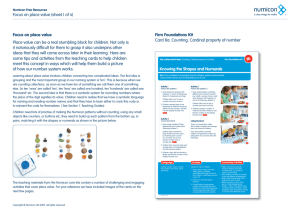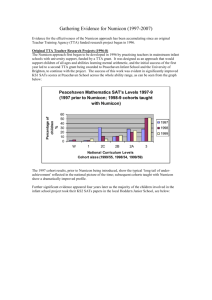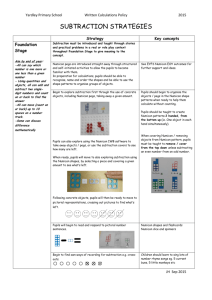Year 1: Pupils need to continuously use mathematical language
advertisement
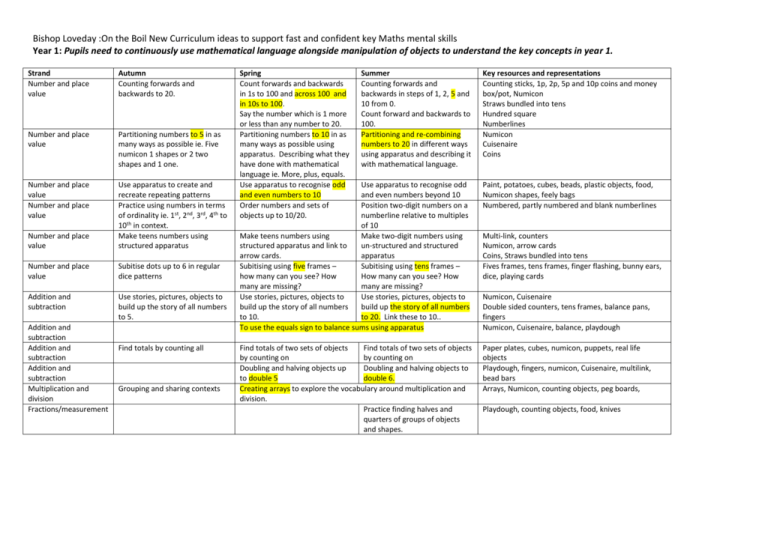
Bishop Loveday :On the Boil New Curriculum ideas to support fast and confident key Maths mental skills Year 1: Pupils need to continuously use mathematical language alongside manipulation of objects to understand the key concepts in year 1. Strand Number and place value Autumn Counting forwards and backwards to 20. Number and place value Partitioning numbers to 5 in as many ways as possible ie. Five numicon 1 shapes or 2 two shapes and 1 one. Number and place value Number and place value Number and place value Use apparatus to create and recreate repeating patterns Practice using numbers in terms of ordinality ie. 1st, 2nd, 3rd, 4th to 10th in context. Make teens numbers using structured apparatus Number and place value Subitise dots up to 6 in regular dice patterns Addition and subtraction Use stories, pictures, objects to build up the story of all numbers to 5. Addition and subtraction Addition and subtraction Addition and subtraction Multiplication and division Fractions/measurement Find totals by counting all Grouping and sharing contexts Spring Count forwards and backwards in 1s to 100 and across 100 and in 10s to 100. Say the number which is 1 more or less than any number to 20. Partitioning numbers to 10 in as many ways as possible using apparatus. Describing what they have done with mathematical language ie. More, plus, equals. Use apparatus to recognise odd and even numbers to 10 Order numbers and sets of objects up to 10/20. Summer Counting forwards and backwards in steps of 1, 2, 5 and 10 from 0. Count forward and backwards to 100. Partitioning and re-combining numbers to 20 in different ways using apparatus and describing it with mathematical language. Key resources and representations Counting sticks, 1p, 2p, 5p and 10p coins and money box/pot, Numicon Straws bundled into tens Hundred square Numberlines Numicon Cuisenaire Coins Use apparatus to recognise odd and even numbers beyond 10 Position two-digit numbers on a numberline relative to multiples of 10 Make teens numbers using Make two-digit numbers using structured apparatus and link to un-structured and structured arrow cards. apparatus Subitising using five frames – Subitising using tens frames – how many can you see? How How many can you see? How many are missing? many are missing? Use stories, pictures, objects to Use stories, pictures, objects to build up the story of all numbers build up the story of all numbers to 10. to 20. Link these to 10.. To use the equals sign to balance sums using apparatus Paint, potatoes, cubes, beads, plastic objects, food, Numicon shapes, feely bags Numbered, partly numbered and blank numberlines Find totals of two sets of objects Find totals of two sets of objects by counting on by counting on Doubling and halving objects up Doubling and halving objects to to double 5 double 6. Creating arrays to explore the vocabulary around multiplication and division. Practice finding halves and quarters of groups of objects and shapes. Paper plates, cubes, numicon, puppets, real life objects Playdough, fingers, numicon, Cuisenaire, multilink, bead bars Arrays, Numicon, counting objects, peg boards, Multi-link, counters Numicon, arrow cards Coins, Straws bundled into tens Fives frames, tens frames, finger flashing, bunny ears, dice, playing cards Numicon, Cuisenaire Double sided counters, tens frames, balance pans, fingers Numicon, Cuisenaire, balance, playdough Playdough, counting objects, food, knives
